On April 26th in the Annus Domini 1478, Lorenzo “The Magnificent” Medici, ruler of Florence and patron of Italy’s Renaissance, was attending Sunday mass with his younger brother Giuliano inside Florence Duomo, the architectural masterpiece designed by genius local engineer Filippo Brunelleschi. Inside the Cathedral they were assaulted by the Pazzi family members: Giuliano died after being stabbed 19 times. Lorenzo survived the attack: had he died, like his brother, the entire globe would have been spoiled of Michelangelo, one of the greatest artists of all time, and of many extraordinary palaces and pieces of art. Besides, modern museums from New York to Moscow would have been half empty today, as much of the artefacts they display come from the Renaissance and, specifically, from XV Century Florence.
At the time, Europe was the leading region in the world and Italy the leading country on the continent: just some 15 years later the failed attack on the Medici Family another prominent Italian, Cristopher Columbus, would discover a new continent, changing world history forever. The same year Lorenzo Medici died, as a wicked fate coincidence: Florence would start declining and so Renaissance and the entire Italian peninsula. The world’s centre of gravity would pass to the new continent, putting the Mediterranean, which had been the cradle of power, politics, and civilization, aside.
Back to that Florence’s “Bloody Sunday”, the “Pazzi Conspiracy” is recognized as the most gruesome event since Archbishop Thomas Becket’s assassination inside Canterbury Cathedral, 3 centuries before. But this killing plot somehow has always been relegated to a minor historical event: it was simply a family feud between two prominent Florentine dynasties. Pazzi were bankers like the Medici: they were basically jealous of their competitors as they succeed to come to power and rule over the city.
As a matter of fact, the Pazzi Conspiracy was far more than a local matter: it was the most complex political machination in XV-century Europe. It inspired also the greatest political essay of all time: a 9-year-old kid, named Niccolò Machiavelli, was very impressed by the event that eventually he wrote “The Prince” as a tutorial for any ruler who wants to avoid being killed and stay in power forever.
While Renaissance gave the world the best art, literature, and architecture in human history, Italy’s politics and government were the opposite: at that time the country was not even ant but a wary aggregate of a dozen state-cities and dukedoms, always battling each other for minor power issues. The Pope and the Church State, which controlled most of central Italy, were none of the less. Rather indeed, Pope himself, Sixtus IV, was the mastermind behind the horrible attack: Lorenzo, as a banker, had denied a loan to the Pope, fearing his ambition to extend his control to central Italy. On the other side, Sixtus IV successfully knocked the door of the other Florentine bankers: Pazzi Family was more than happy to financially support an enemy of Lorenzo. Eventually, inspired by the Pope, they also tried to kill him.
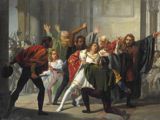
UNDER THE TUSCAN SUN
The Medici family, also known as the House of Medici, first attained wealth and political power in Florence, in the 13th Century, through its success in commerce and banking. Beginning in 1434 with the rise to power of Cosimo de Medici (or Cosimo the Elder), the family’s patronage of the arts and humanities made Florence the cradle of the Renaissance, Europe’s scientific, artistic, and cultural rebirth after the dark centuries of the Middle Age. The Medici elected four popes (Leo X, Clement VII, Pius IV, and Leo XI); their genes have been mixed into many of Europe’s royal families. Every year millions of visitors flock to the Uffizi Museum in Florence, to admire Botticelli’s Venus, Michelangelo’s David, or Piero Della Francesca’s paintings. They’re all there because of Cosimo: when the patriarch moved the Florentine administrative offices into a building known as the Uffizi (literally, Offices), he also established a small museum. The building is now one of the greatest museums in the world.
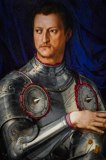
HUMBLE ORIGIN
The Medici story began around 1100, soon after the turnabout of Annus Mille (Year 1000) when family members from the poor village of Cafaggiolo, in the mountains of the Mugello region, moved south to Florence. Starting a banking activity, which was not allowed to common people in the State of the Church, the Medici rose to become one of the most important families in the city. Their rise, though, was at risk of premature death by the late 14th century, when they suffered a decline, the first of a long series. Some 200 years after their arrival in the city, Salvestro de Medici was serving as gonfalonier (standard bearer), the highest government charge in Florence: he was the first family member to reach such a high political post. But in 1382 he was banished from the city, due to his oppressive policies and was forced to live in exile. The Medici dynasty seemed to have come to an abrupt end. It was not.

ANOTHER RISING STAR
Glory and power of the Medici came from another branch of the family, descending from Silvestro’s distant cousin Giovanni di Bicci de Medici: he would begin the greatest Medici dynasty history had come to know. Giovanni had many sons: the elder one was named Cosimo. He rose to political power in 1434, when he came back from another exile that the family suffered. Differently from his cousin, though, he was smart enough to be welcomed as a “Pater Patriae”, a saviour of the country. He managed to gain power in the Republic of Florence, which, as a matter of fact, he turned into an oligarchy dominated by his family members. He ruled Florence as an uncrowned monarch for the rest of his life. Known to history as Cosimo the Elder, he lived a spartan life but was a devoted patron of the arts, supporting personalities such as Lorenzo Ghiberti, Filippo Brunelleschi, Donatello, and Fra Angelico. During Cosimo’s time, the Italian Renaissance flourished: under his grandson Lorenzo’d tenure, the Medici reached their peak and Florence became the capital of Europe. The reason why such a reverse in fortune was accomplished by the “godfather” Cosimo laid some 300 kilometers north of Florence, in another “country”: the Sforza dukedom in Lombardy.
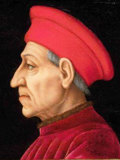
MEANWHILE IN MILAN
The Medici Family’s rise is linked to the parallel rise of the Sforza family in Milan. For decades, during the Middle Ages, the city of Milan, former West Roman empire capital and a “free city” under the Holy Roman Empire with Charlemagne, had been ruled by the Visconti family, historically adverse to Florence. But then, in 1450, something happened: a military leader, called Francesco Sforza, became suddenly Duke of Milan. In doing so, he sought financial support from his old friend Cosimo: being a banker, the Medici patron approved a loan to Francesco which, in return, gave his military support to Cosimo. In doing so, both gained power: Milan and Florence were not enemies anymore. Four years later the Sforza signed the “Lodi Peace” establishing a long period of tranquillity for Italy which was the base for the Renaissance to flourish. As frequently happens, Cosimo’s heir had not the standing of the father: Piero Medici, nicknamed “Gottoso”, was not so able in maintaining power: he barely escaped a coup by Florentine wealthy families in 1466, only to die 3 years after. His son, Lorenzo, was not even 20 when he took the command. Luckily for him, his father had one great virtue: he had not dissipated the family’s fortune.
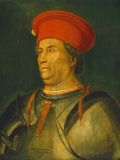
THE GOLDEN AGE
The Medici reached their zenith with Lorenzo, also known as Lorenzo the Magnificent: big-nosed, due to an accident, he was a poet himself and supported masters such as Sandro Botticelli, Leonardo da Vinci, and Michelangelo: the latter would gift Florence with the over-famous David; the eponymous plaza and the Medici family tomb. Reportedly, every morning Lorenzo would wake up and stare at the portrait of Galeazzo Maria Sforza he had put in his bedroom: Lorenzo was a close friend of Francesco Sforza’s son. The portrait, an exquisite artwork from Piero Pollaiuolo, depicted the Sforza Jr. as a hedonist, still nasty, dandy playing with a glove, like a woman. Despite being allied, Lorenzo was used to staring at that picture as a reminder to himself not to become like his friend: a cruel and lascivious landlord. So much so that in 1476, Galeazzo is murdered. It was an ominous killing for Lorenzo: the Medici grasp on Florence was starting to vacillate, also because the great ruler lost his most important ally. Only 2 years after Galeazzo’s assassination, the Pope set up a plot against the Medici, using the Pazzi family. Lorenzo survived the attack inside the cathedral with a wound on his neck. He would rule Florence for another 15 years but the Medici dynasty was bound to its end, even if the family would manage to stay in power for another 200 years. After Lorenzo’s premature death, at the very early age of 43, his eldest son Piero succeeded him, but he soon infuriated the public by accepting an unfavourable peace treaty with France. After only two years in power, Lorenzo’s son was forced out of the city in 1494 and died in exile. Fifteen years later, in 1512, thanks in part to the efforts of Piero’s younger brother Giovanni (a cardinal at the time and soon-to-be Pope Leo X), the Medici family was able to return to Florence. The next few years marked a short rebirth of Medici’s influence in Europe, as Leo X followed in his father’s humanistic footsteps and devoted himself to artistic patronage.

ON THE ROAD TO FRANCE
Piero’s son, also named Lorenzo like his grandfather, regained power in Florence, but it was the swan song for the Medici. Lorenzo Jr. had a daughter named Caterina (1519-1589): she would become famous as the queen of France after marrying King Henry II: three of their four sons would rule France as well. But the Medici’s name disappeared from history. By early 1500, few descendants of Cosimo the Elder remained. Giulio de Medici, the illegitimate son of the assassinated Giuliano, abdicated power in 1523 to become Pope Clement VII, and the short and brutal rule of Alessandro (reputed to be Giulio’s own illegitimate son) ended with his killing in 1537.
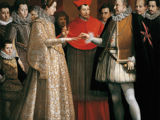
END OF DYNASTY
In general, the later Medici line renounced the older generation’s republican sympathies and established more authoritarian rule, a change that produced stability in Florence and Tuscany, but led to the region’s decline as a cultural hub. After Ferdinand’s son Cosimo II (who supported the work of the mathematician, philosopher, and astronomer Galileo Galilei) died in 1720, Florence and Tuscany suffered under ineffectual Medici rule. The last Medici ruler died without a male heir in 1737, ending the family dynasty after almost three centuries: Grand duke of Tuscany, Gian Gastone, came to history as the last Medici. By agreement of the European powers (Austria, France, England, and the Netherlands), control over Tuscany passed to Francis of Lorraine, whose marriage to Hapsburg heiress (and mother of Marie Antoinette) Maria Theresa of Austria would begin the long European reign of the Hapsburg-Lorraine family.






Sobre el autor
LFG Investment Consulting SA